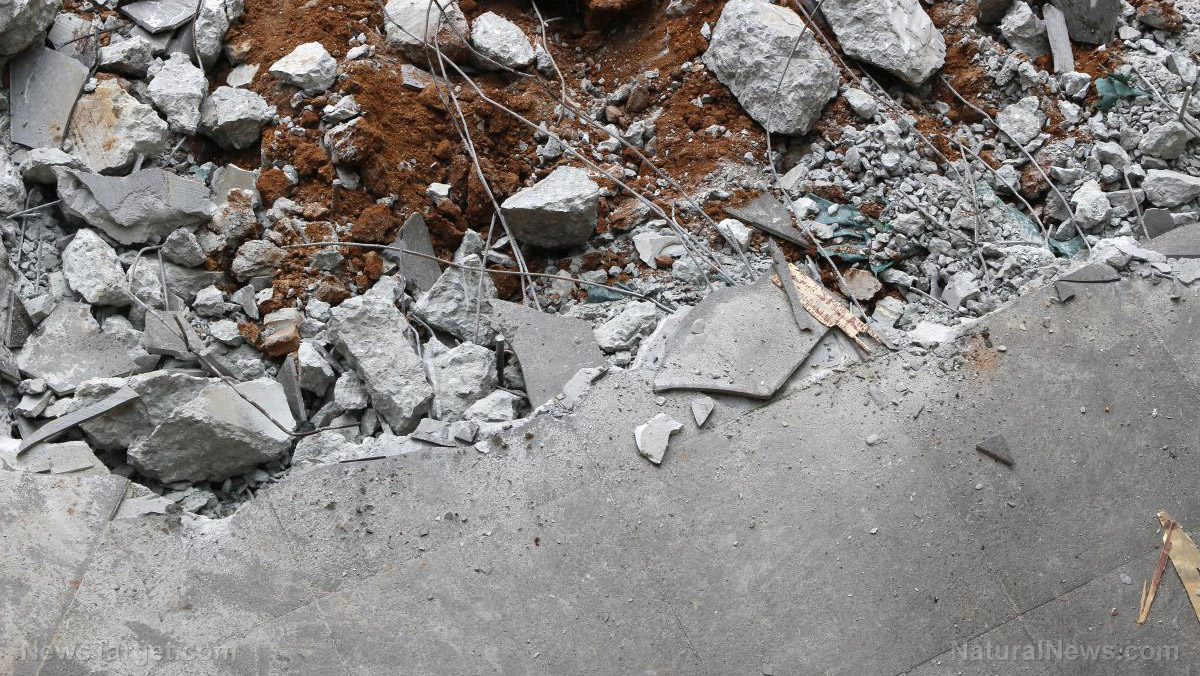China plans on building its very own “Atlantis” undersea military base
02/16/2019 / By Edsel Cook

China is planning to cement its presence in the South China Sea by building an undersea base that will support unmanned military and scientific submarines. This underwater Atlantis is going to be the first colony that is completely run by artificial intelligence.
This ambitious plan started when Chinese President Xi Jinping visited a deep sea research in Hainan province during 2018. Xi had called upon the researchers to do something that other countries had never done before.
In response, the Chinese Academy of Sciences (CAS) came up with the idea to build an undersea base in the hadal zone of the ocean. Comprising the deepest part of the ocean’s trenches, this zone is found at depths of 19,685 to 36,100 feet (6,000 to 11,000 meters.)
The water pressures found in that zone are enormous. Any structure or undersea vessel that stays in the hadal zone must be made from really strong materials, which would be difficult and expensive to develop.
A researcher likened the project to setting up a colony on an alien planet. He added that the occupants of the base are going to be autonomous robots powered by artificial intelligence. (Related: China to build “solar roadways” with fully transparent concrete covering solar cells.)
China wants to build an underwater base to study the bottom of the sea
The future deep sea research facility is going to be an unmanned laboratory that is hooked up to a ship or floating platform for electricity and communication with humans. Its artificial intelligence will be capable of running on its own without human intervention.
This underwater base will send out submarine drones to map out the surrounding seabed, study the organisms found at those depths, and bring back examples of minerals at the bottom of the sea. The data and samples collected by the subs will be analyzed by the base’s AI and compiled into a report for its human masters.
The environment at those depths is considered to be as inhospitable as outer space. Both the base and its submarine drones will face dangers like water pressure that can crush steel, water that corrodes metal and erodes seabeds, underwater earthquakes as powerful as any on land, and unpredictable geology.
The Chinese government has allocated $162,635,000 (1.1 billion yuan) as the initial budget for this project. This is the biggest amount of funding ever given to a deep sea research facility.
Experts recommend setting up the Chinese deep sea research facility in the Manila Trench
CAS Guangzhou researcher Yan Pin cited several requirements for the location that will host the proposed deep sea research facility. The area must be deep enough, experience plenty of geological activities that could be studied, and stable enough to avoid underwater landslides and volcanic eruptions.
Yan recommended the Manila Trench, the deepest part of the South China Sea. Although its maximum depth of 17,700 feet (5,400 meters) is shallower than the minimum requirement for the hadal zone, the Trench has many thermal vents that belch chemicals from the mantle of the Earth.
Furthermore, the Manila Trench is one of the most geologically active zones in the world. An earthquake in this area could trigger a 12-foot-tall tsunami aimed at the general direction of Hong Kong.
“China and the Philippines should sit down and discuss it,” Yan suggested. “A tsunami [warning] is a big selling point. Data collected by the station would benefit all countries in the region. It could save many lives.”
The ocean floor takes up more than 70 percent of the surface of the Earth. Yet humans have only succeeded in exploring one percent of it. China is planning to be the first country to map out this unknown region.
See FutureTech.news for more stories about the technology of the future.
Sources include
Tagged Under: AI, artificial intelligence, China, deep sea, military base, research, South China Sea, submarine drone, undersea, underwater drones, weird science




















